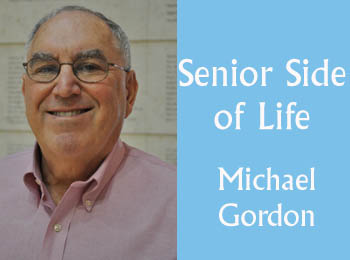Photography is powerful. People are usually fascinated by pictures and love to look at those from their past. How often do we find, when we talk with someone and the subject of children or grandchildren comes up, that pictures are immediately accessed on their ubiquitous electronic devices. When visiting a home, people often show great interest in the family photographs.
What I have come to appreciate in my practice as a geriatrician with a special focus on late-stage dementia and end-of-life care, is that photography can play a very instrumental role in providing an outlet for elders, including those living with dementia, to express their creative spirit, and a vehicle to bring back important associations with the person’s loved ones.
The range of interactions with photographs includes teaching those who are still capable of learning a new skill to take pictures and experience the joyful satisfaction of field photography trips, with the added, satisfying challenge of composing pictures and then learning how to modify them in this day and age, usually digitally.
For those with later-stage dementia, the challenge is greater, as cognitive abilities and language significantly deteriorate. The use of photographs to bring back recognizable memories can often play a therapeutic role. There has been a gradual evolution in the understanding of how best to communicate with those living with late-stage dementia.
I recall the replacement of what was called “reality orientation,” where it was believed that it was necessary to constantly “remind” those living with dementia where they were, what the date was and everything pertaining to the present, only to discover that within very short periods, the people were often back in another part of their lives.
It became clear that perhaps preferable or an adjunct to “reality” orientation was “validation therapy” developed by Naomi Feil between 1963 and 1980. It promoted the idea that if people were experiencing something positive from their past, rather than directing them away from that memory, which might be emotionally rich, it was best to enhance that memory experience and promote good associative emotions.
I recall that my dad, even when his dementia was moderately advanced, could identify my sister and me in person and in pictures, but more importantly, our mother (who had died about 10 years previously) and his grandchildren who provoked fond responses and feelings.
When he was hospitalized, my sister and I used photographs to provoke good feelings. He would sometimes sit with a pile of photos and look through them, and he could usually identify the people in them. What my sister and I witnessed is supported by a limited literature in which photographs can be used to beneficially stimulate conversations and recollections in those living with later-stage dementia.
Photography has become almost universally available. We constantly document personal and family interactions. Historian/author Yaffa Eliach has her family’s photographic documentation of their Lithuanian Shtetl of Eishyshok on exhibit in the Washington Holocaust museum. The photographs reflect that Jewish village’s inhabitants’ lives. Each person’s photographic collection becomes part of his or her rich life narrative.
Adapted from Gordon M, Journal of Current Clinical Care, March 3 2012.
With this my last CJN senior’s column, I want to acknowledge the constant editing assistance and encouragement of The CJN’s staff in allowing me to reach the paper’s reading public. It has been an honour and a pleasure.
Dr. Michael Gordon is medical program director of palliative care at Baycrest. His latest book is Late-Stage Dementia, Promoting Comfort, Compassion and Care. His previous book, Moments that Matter: Cases in Ethical Eldercare, follows his memoir, Brooklyn Beginnings: A Geriatrician’s Odyssey. All can be researched at his website: http://www.drmichaelgordon.com.
